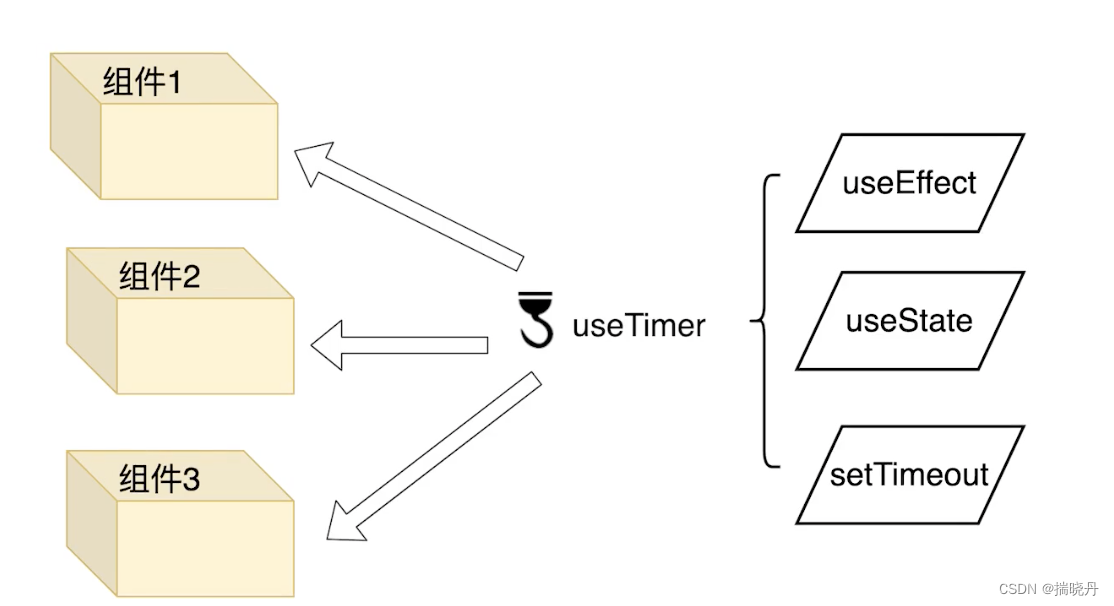Table of contents
2. What are high-order components?
3. What is css-in-js technology

1. What is React-Hoc
React-HOC (Higher-Order Component) is a pattern in React for reusing component logic. It is essentially a function that accepts a component as a parameter and returns a new component.
HOC can be used to add additional functions to components without modifying the original components, such as state management of components, abstracting shared logic, handling permission control, etc.
The method of using HOC is to pass the component to be enhanced as a parameter to the HOC function, and then return a new enhanced component. This pattern allows component functionality to be dynamically combined and extended.
Some common HOCs in React include: redux's connect function, react-router's withRouter function, etc. By using HOC, better code reuse and functional expansion of components can be achieved.

2. What are high-order components?
Higher-Order Component (HOC) is a pattern for reusing component logic in React. It is essentially a function that accepts a component as a parameter and returns a new component.
Higher-order components can be used to add additional functionality to a component or modify existing functionality without modifying the original component. It abstracts common logic and applies it to multiple components, thereby achieving code reuse and component function expansion.
Specifically, higher-order components can implement the following functions:
-
Props Proxy: Pass additional data or functionality to the wrapped component by modifying the component's props.
-
Inheritance Inversion: Modify or enhance the wrapped component by inheriting it.
The method of using higher-order components is to pass the component to be enhanced as a parameter to the higher-order component function, and then return a new enhanced component. This pattern allows component functionality to be dynamically combined and extended.
Some common high-order components in React include: Redux's connect function, React Router's withRouter function, etc.
Higher-order components are not an official concept of React, but a common design pattern used to solve the problem of component logic reuse.

3. What is css-in-js technology
CSS-in-JS is a front-end development technology for embedding CSS styles directly into JavaScript code. It implements component-level style encapsulation and management by writing CSS style rules in JavaScript and dynamically applying them to components. The main idea of CSS-in-JS is to closely combine styles with component logic and manage styles on a component-by-component basis, thereby improving the reusability and maintainability of components.
Several common implementations of CSS-in-JS include:
-
Inline Styles: Use styles directly as attributes of JavaScript objects, and apply styles by dynamically setting the style attribute of the component.
-
CSS Modules: Map class names in CSS style files to property names of JavaScript objects, and apply styles by introducing this object.
-
Styled Components: Use CSS-like syntax to encapsulate styles by creating React components and use these styles in components.
-
Emotion: Based on the idea of Styled Components, it provides more advanced API and performance optimization, and supports dynamic styles and CSS style functions.
Advantages of CSS-in-JS include:
-
Component-level style isolation: The style definition of each component only takes effect on the current component and will not affect other components, avoiding style conflicts and pollution.
-
Better maintainability: Styles are closely integrated with components, making them easier to understand and manage. Modification and reconstruction of styles are more intuitive and simple.
-
Dynamic styles and interactions: Because styles are dynamically generated through JavaScript, styles can be dynamically changed based on the state and interaction of components to achieve more flexible style effects.
-
More tool support: CSS-in-JS provides a wealth of tools and libraries to help developers write, build and debug styles more efficiently.
Although CSS-in-JS provides a better development experience and maintainability in some scenarios, it also needs to be weighed against the additional performance overhead and learning costs it brings. The choice of whether to use CSS-in-JS should also be determined based on specific project needs and the team's technology stack.